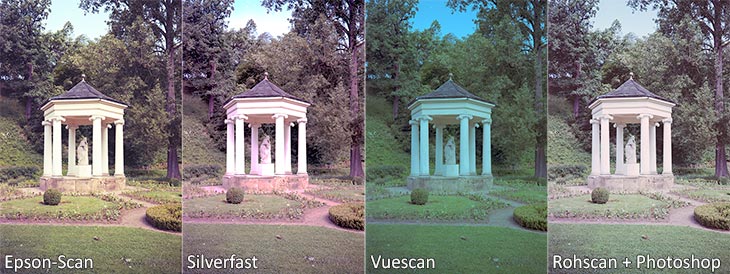
I'm experimenting with scanning at 2400, then downsampling in in ps to double my printer driver's native resolution (at print size). So far I'm finding that 2400ppi is seeing all the detail that the scanner can resolve. It is on his to do list and eventually I think we will get it. But it would be nice if Ed Hamrick added curve controls to it. I find Vuescan to be much superior to Epson's scanning software. I often need no spotting at all, and even in the worst cases I can do it all in five or ten minutes. You shouldn't need to use any form of digital ice. If you are careful with your negatives, you should have to do little or no digital spotting (with the clone tool). For b/w you are not likely to have any problems with dynamic range. You can probably scan at 2400 ppi without any visible loss of detail. The 4870 apparently can't resolve much fine detail above 35 lp/mm if it can even achieve that. If you do sharpen, use one of the techniques which isolates regions around edges and sharpens only in those regions. For what you are doing, the basic scan, even without sharpening will probably suffice. I experimented a little with multiple scans, but I don't find it necessary. The 4870 is similar but resolves a bit more fine detail. I've been scanning 4 x 5 for a while now with the Epson 3200. There's loads of 'pluggins' and 'auto' this and that, but they all (well nearly all) degrade the image somewhat. There's a big learning curve here, just as in a wet darkroom. You want the sharpest image possible, I guess, so leave it alone and spend the time spotting!


Don't forget to set the colourspaces away from sRGB tooĭigital ice is ok for workprints but it works by softening the image slightly. make sure you use Vuescan in Advanced mode and set both the blackpoint and whitepoint to '0' so that the histo is unclipped - the default is an 'idiot' mode that gives you clipped black. Scan at 'image' 16bit and you get a neg in PS which has had no messing with by the scanner software. Vuescan is the best way IMO of getting BW scans. Its easy to test, do a scan with and without multiplepassing and see if it is softer by comparing the scans 'at pixel' view.

More exact scanners use multiple sampling to achieve the same end. Paul, multiple passes don't work too well on a budget scanner as the head has to go back to the exact same spot each time.


 0 kommentar(er)
0 kommentar(er)
